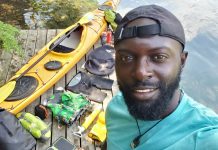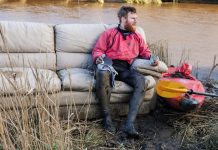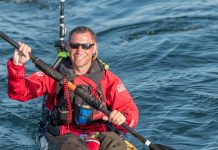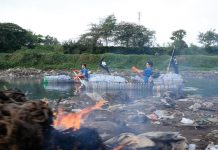Sustainability visionary, brown bear whisperer, solo expedition paddler and Zen master of Lemesurier Island—where he’s lived alone for nearly two decades—Bob Christensen, 47, is a good candidate for the most interesting man in Southeast Alaska. Twenty-five years ago, Christensen built a traditional baidarka from modern materials and paddled it, alone, from Alaska’s Prince of Wales Island to Bellingham, Washington. The trip marked the first time he’d ever sat in a kayak. These days, Christensen can be found commuting by small boat to ports all over Southeast Alaska, helping develop more sustainable communities.
Who lives alone on an uninhabited island?
I did months-long, solo kayak trips for five summers throughout Southeast Alaska. Jigging for halibut in front of the historic Willoughby Cabin on Lemesurier Island, I hooked into a big one. The fish dragged my boat around the kelp forest. I had broken my pole and started wrapping the line around my arm when the people inside the cabin paddled out in their double Klepper to help land the fish. I ended up camping down the beach and we spent three days eating that halibut. The next year, they offered me the job of caretaker. Deep isolation like that leads to a lot of self-reflection and spiritual contemplation. It was the same on my kayak trips, but when I planted myself on the island that first winter, it was amplified tenfold.
What brought you to Southeast Alaska?
In college, I became interested in human-nature interactions and designing sustainable communities. The vision was, my college friends were sending me off to Alaska to find a piece of property to buy and send a note back saying, “Okay, let’s build it.” Of course, that never happened, but hiring on with a variety of wildlife projects was a way to continue studying nature while holding onto that vision. It was two years after the Exxon Valdez spill, and I took a job surveying the beaches of Prince William Sound. I met a biologist who invited me to Southeast Alaska to participate in cave exploration on Prince of Wales Island. Later, moving to Lemesurier Island seemed like an ideal short-term solution to the challenge of finding an inholding to develop into a sustainable community.
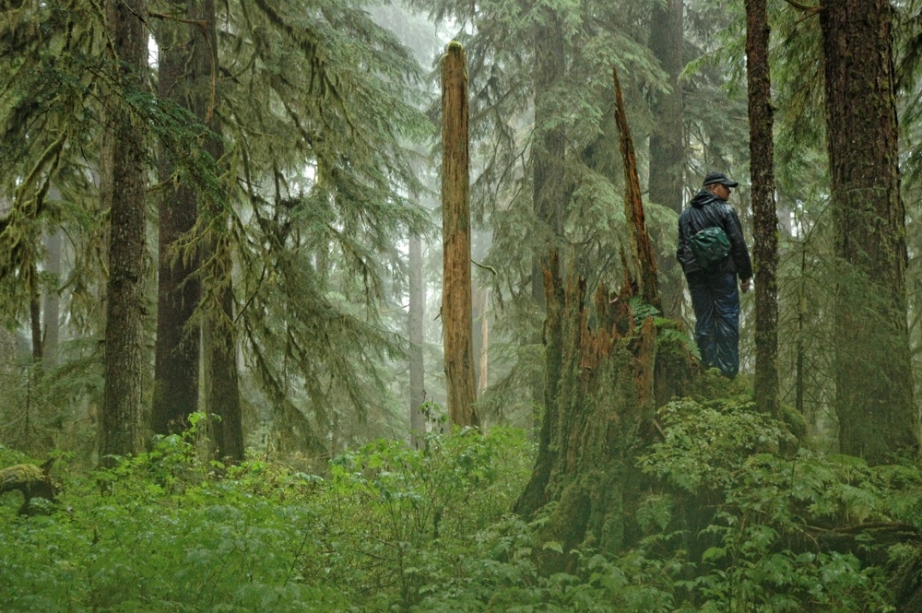
When did you overcome your fear of bears?
After the caving expedition, I paddled back to Bellingham. I had no experience in bear country. I remember stupid things like, after days of banging my pots and pans together in terror, finally figuring out the noise I was hearing in the shrubs was a winter wren. I focused on learning where not to camp, which started teaching me how to read bear sign. The fear turned into a personal study reading patterns of use. I’ve had many experiences that could have gone bad but didn’t. Once, on Chichagof Island, I was lying down with a migraine headache and a bear came up and sniffed my face.
Where do you find inspiration?
My inspiration comes from the beauty of nature, not just the aesthetic, but how eloquent the ecology, the interaction of life, is. It also largely comes from the people I’m working with. There’s a lot of angst in our culture right now about humanity. Whatever the nasty stuff is that we focus on in the news, it hurts our spirits. When I talk to people about their vision for sustainability in their communities, I see them light up.
Why focus on community sustainability?
In 2008, I was working with the Community Forest Project in Hoonah, Alaska. The Southeast Alaska Conservation Council, the Wilderness Society and other philanthropically funded entities were trying to get a big wilderness bill passed. It wasn’t working. Investors wanted to do something that addressed human wellbeing alongside conservation. The only thing that came close was the Hoonah Community Forest. We expanded to form Sustainable Southeast Partnership with a much more comprehensive vision that included food security, economic development, energy conservation and renewable sustainability as core elements. It’s the culmination of my life’s work.

Subscribe to Paddling Magazine and get 25 years of digital magazine archives including our legacy titles: Rapid, Adventure Kayak and Canoeroots.



